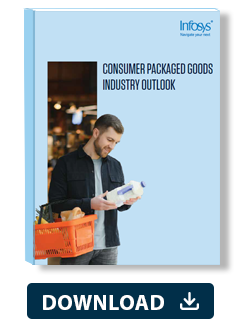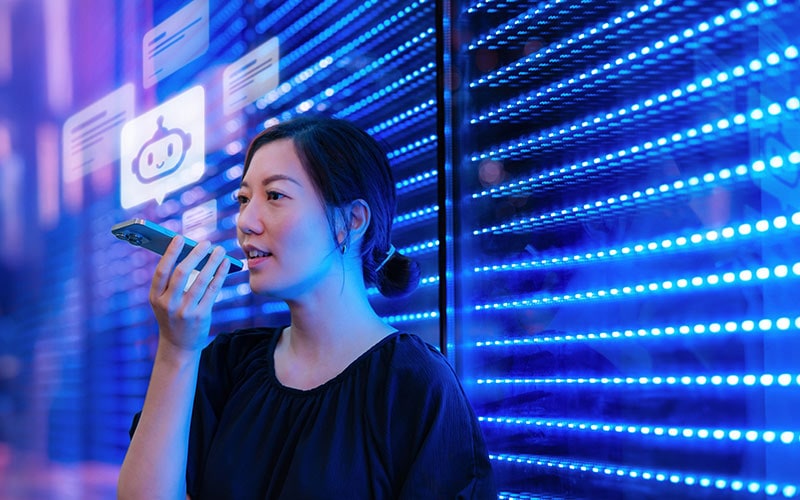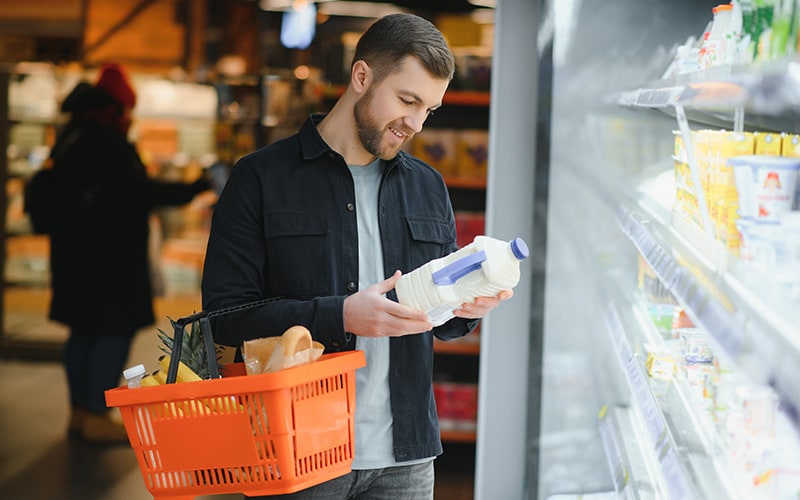
EXECUTIVE SUMMARY
The consumer-packaged goods (CPG) industry is navigating economic headwinds, evolving consumer preferences, and technological disruption this year. Global inflation is decreasing to an expected 5.8%, but is anticipated to remain above the pre-pandemic average of 2.7%, although developed markets such as US and Europe could see a decrease much faster than emerging markets, having more resilient economies.
The industry’s global retail sales value increased by almost 10% year on year in 2023, mainly owing to price increases. But consumers have reached the limits of their willingness to absorb higher prices, especially for everyday essentials, and are expecting products to be discounted. They are looking to downtrade to value brands and choose private labels which are known to offer good quality at reasonable prices.
Hence, after relying heavily on price increases to drive growth in recent years – an unsustainable game plan – CPG companies are shifting to a strategy of profitable volume, focusing on selling more units while prioritizing profitability through an optimized product mix. That said, businesses will need to make changes to their volumes in a gradual and well-thought-out manner for best results.
The key trends shaping the industry include the continued rise of e-commerce and direct-to-consumer channels, increased investment in digital advertising and marketing technology, growing demand for sustainable and purpose-driven brands, and the transformative potential of artificial intelligence (AI) across the value chain. Major companies are leveraging AI for every area from product development and supply chain optimization to hyper-personalized marketing.
While economic uncertainty persists, the value added margin in the CPG market is expected to be 24% this year. Emerging markets, particularly in Asia, are driving expansion. In mature markets, premium and value segments are outperforming the middle, as consumers either trade up for quality/experience or trade down to save money.
To succeed in this environment, consumer goods companies must embrace emerging trends, double down on innovation, harness the power of data and AI, build deeper connections with consumers, and adapt their portfolios and business models for the future. Those that do so effectively will be best positioned to drive profitable growth and create long-term value.
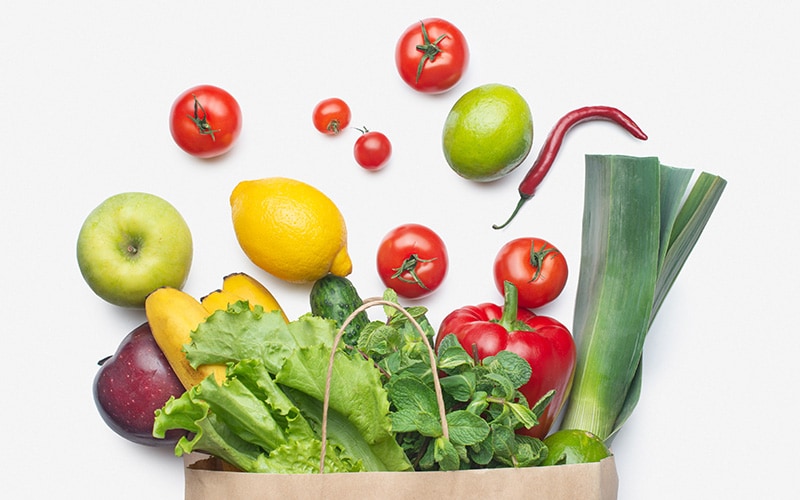
OVERALL STATE OF THE INDUSTRY
After several years of pandemic-driven disruption, the consumer goods industry is transitioning, though gradually. While the acute supply chain challenges of 2020-2022 have largely abated, companies are facing persistent inflation, cautious consumer spending, and an unstable economy.
The CPG market size – segmented into Food and Beverage, Cosmetics and Personal Care, Pharmaceuticals, Nutraceuticals, and Others – was valued at $5,297.8 billion in 2023, and is expected to grow from $5,483.2 billion in 2024 to $6,976.2 billion by 2032. E-commerce in CPG is expected to grow in the next five years, three times faster than in-store shopping and is likely to make up 15% of the overall CPG industry by 2032.
Direct-to-consumer models are gaining traction as shown by brands such as Everlane and Glossier, allowing businesses to have a tighter grasp over their brand management, helping them build closer relationships with consumers directly, and thus realizing more value. Sustainability remains a key focus for CPG companies, with 70% of respondents in a recent study saying they are willing to pay more for sustainably produced goods.
The industry landscape continues to evolve through mergers and acquisitions (M&A) activity, albeit at a slower pace than in recent years due to economic uncertainty. In the first half of 2024, although the value of M&A deals increased by 5% compared to the same period in 2023, the overall transaction volume decreased by 30%, perpetuating a downward trend that began in 2022. However Mars’ announcement of its acquisition of Kellanova for $35.9 billion is making waves for being one of the largest M&A deals since 2000.
Major players are divesting non-core assets and slow-growing categories while making targeted acquisitions in high-growth categories and emerging markets. For example, Haleon sold ChapStick to Suave Brands Company to manage its portfolio better. While ChapStick was a popular product, it wasn’t central to Haleon’s primary business focus. Conversely, acquiring ChapStick allowed Suave Brand Company to expand its range of products. Big players are considering investing in expanding segments of their business, in areas such as snacks, frozen foods, and healthy alternatives.
Looking ahead, companies must navigate shifting consumer preferences, accelerating digital transformation, and intensifying competition. Success will hinge on agility, innovation, and a relentless focus on the consumer.
SHORT-TERM OUTLOOK
The consumer goods industry faces a challenging but potentially rewarding landscape in the short term. While economic headwinds persist, there are opportunities for companies that can effectively navigate changing consumer behaviors and leverage emerging technologies.
Financial trends
The growth in the industry last year was largely driven by price increases rather than volume gains, which accounted for 95% of retail sales value growth in the US and Europe.
Major players reported mixed results in 2023:
- Procter & Gamble saw net sales increase of 2% driven by higher pricing of 9%. The organic sales were up 7%.
- Unilever’s underlying sales growth was 7%, driven by price growth of 6.8% and volume growth of 0.2%.
- Nestlé’s organic growth was 7.2%, with pricing of 7.5% and real internal growth (RIG) of -0.3%
- Coca Cola’s net revenues grew 6% and organic revenues (non-GAAP) grew 12%, driven by 10% growth in price/mix and 2% growth in concentrate sales.
These figures underscore the industry-wide trend of relying on price increases to drive top-line growth, a strategy that may prove unsustainable in the long run.
Results in first half of 2024:
- Procter & Gamble’s organic sales grew 4%.
- Unilever reported an underlying sales growth of 4.1% and volumes up 2.6%.
- Nestle’s organic sales growth was 2.1%.
- Coca-Cola’s net sales increased 2.3%.
The sales growth can be attributed to several key factors including a focused product portfolio, an emphasis on power brands, the introduction of new products, and the optimization of organizational design for enhanced efficiency.
Estimated financial trends (2024 and beyond)
The more modest growth forecast of the industry reflects expectations of a slowdown in price increases and continued economic uncertainty. However certain categories such as beauty, wellness, and so on will have better growth opportunities than others, due to changing consumer preferences and e-commerce expansion. Skincare is expected to generate $177 billion revenue by 2025. The industry is expected to display a compound annual growth rate (CAGR) of 5.51% from 2024 to 2032. The revenue of the global cosmetics market is projected to be almost $129 billion by 2028. It is expected to exhibit a CAGR of 6.1% from 2024 to 2030. Hence a differentiated focus will help businesses to lead in terms of growth.
Key financial trends in 2024
Shift to profitable volume: Only 2% in Deloitte’s study of consumer products executives plan to prioritize raising prices as part of their growth strategy. Instead, companies are focusing on selling more units while prioritizing profitability through an optimized product mix and keeping prices reasonable. Revenue growth management (RGM) is playing a critical role as companies try to balance their volumes with the right price, and strive for outcomes they can largely predict using AI-driven data analytics
Increased spend on generative AI: As per Infosys' Generative AI Radar research, CPG spending on generative AI is set to grow by 65% in 2024, compared to 2023 (Figure 1). The generative AI market within this sector is projected to grow to $5.45 billion by 2033, with an expected CAGR of 9.5% over the forecast period.
Figure 1. CPG companies are increasing their spend on generative AI
Source: Infosys Knowledge Institute
E-commerce growth: The global ecommerce industry is projected to generate $6.9 trillion by the close of 2024, and its sales are expected to grow to $7.4 trillion by 2025. Though e-commerce sales have perhaps inevitably slowed since the pandemic, e-commerce continues to remain popular with consumers owing to the convenience, variety, and affordability factor due to discounts offered by e-commerce sites. Also, the growth of social commerce has given brands a better understanding of consumer behavior and the ability to personalize messaging and products and increase online sales.
Implications
The short-term outlook presents both challenges and opportunities for consumer goods companies. To succeed in this environment, businesses need to:
Optimize product mix: Pick the optimal mix of products by focusing on the high-margin and high-growth categories that will grow their sales significantly, and move away from underperforming brands or product line. For example, Church & Dwight is focusing on the seven brands that drive most of its profitability, from 14 brands.
Invest in digital capabilities: Strengthen e-commerce platforms and enhance digital marketing efforts through AI-led technologies, and leverage data analytics for better decision-making. Infosys helped a food and beverage company use AI to deliver precision in media allocation by identifying the optimal blend of paid, earned, and owned media for each neighborhood by analyzing the vast data sets. This resulted in an 8% uplift in ROI.
Embrace sustainability: Meet growing consumer demand for eco-friendly products by ensuring sustainable agricultural practices for production of raw materials and ensuring that the finished product is reusable and recyclable. It is also important to maintain transparency in supply chains and make consumers aware of their ethical sourcing practices.
Drive innovation: Develop new products and business models that address evolving consumer needs and preferences derived from deep insights and data driven by AI. Being part of a connected partner ecosystem and exchanging key information with each other in real time can help companies meet changes in consumer demands quickly, among other benefits.
Build resilience: Diversify supply chains, improve forecasting capabilities, and maintain financial flexibility to weather potential economic shocks.

LONG-TERM OUTLOOK
The consumer goods industry's long-term outlook is characterized by transformative shifts in technology, consumer behavior, and global demographics.
Digital transformation and AI integration
Though the global generative AI market in the CPG sector is projected to grow, Infosys' Generative AI Radar research shows most CPG firms have yet to implement or generate value from generative AI, with close to 61% having either not started any generative AI initiatives or still finding themselves in the experimentation stage. Top brands seem to be leading the way.
Some of the major applications of AI include:
Product development: AI-powered analytics will enable faster, more targeted innovation. For example, Danone’s proprietary robot stomach mimics the human gut and allows for comprehensive testing of probiotics and how they react with the digestive system, helping the brand create products related to gut health. Givaudan helps create new perfume samples swiftly by employing an AI-powered tool called Carto which helps select the raw materials, followed by a robot immediately producing a sample using real ingredients and the optimal formula. Infosys helped a snacks company use an AI-powered digital product accelerator to streamline its journey from concept to market, leading to a 30% reduction in time to market.
Supply chain optimization: Predictive analytics and machine learning will enhance forecasting accuracy, reduce waste, and improve inventory management. Colgate- Palmolive deploys predictive maintenance for its machinery through 24/7 monitoring using wireless sensors and analytics driven by AI to ensure the smooth functioning of the supply chain. Reyes Coca-Cola Bottling integrated an AI tool in its vending management software to gather real-time data on which products were bought most often from vending machines in specific locations, for example, a hospital or a sports stadium, to stock more of those items in those locations.
Infosys helped a consumer goods company revamp its order fulfilment process using AI and automation. The brand was able to automate its order management and fulfillment processes, optimize its supply chain, and achieve seamless order-to-cash at scale, leading to a 70% cost cut per order and up to 98% touchless order processing.
Personalized marketing: AI will enable hyper-personalized campaigns and product recommendations. Haut.AI’s SkinGPT platform uses generative AI to show how a particular individual’s skin will age and change over time, depending on their external factors, and shows how using certain skincare products will impact that change. Unilever’s BeautyHub PRO selfie tool uses AI to give personalized recommendations on skin and hair to users. These are only a few of many examples of how beauty brands can leverage advancements in skin and beauty tech to create unique experiences to engage their consumers. Infosys’ Generative AI research shows that nearly half of the CPG companies surveyed expect generative AI to have the biggest impact on content generation (Figure 2). With personalization being a key tactic for CPG companies to appeal to their audience, this technology helps them meet that goal efficiently.
Figure 2: Generative AI expected to have most impact on content creation
Source: Infosys Knowledge Institute
Customer service: Advanced chatbots and virtual assistants will provide 24/7 support, improving customer satisfaction while reducing costs. Integrating generative AI in chatbots can transform customer service, cutting down the time spent on customer calls significantly. Additionally, it speeds up the reporting process and enhances brand positioning by improving product descriptions and categorization. US-based airline JetBlue used a generative AI-powered solution to automate its chat channel, which helped its contact center save an average of 280 seconds per chat, resulting in a total of 73,000 hours of agent time saved in one quarter. “I have come across companies that have been leveraging AI to drive optimization. I have seen it in the customer service function, where 50% to 60% of the questions, queries, and interactions are directly managed by chatbots, be it in one language, or multi languages. As a result, the customer is getting responses in a speedier way. Businesses are able to reduce the other investments required in that space. The pricing point or cost has gone down and there is an effect on the marketing side,” Sachin Jangam, global practice leader, Consumer, Retail, and Logistics, at Infosys Consulting, explained in a recent webinar.
Figure 3: Where CPG companies are applying AI
Source: Infosys Knowledge Institute
Portfolio change: Revenue growth in CPG has diminished compared to 1980 to 2010. This is due to a range of factors, the main one being that the consumer’s attention is divided across a wide range of smaller brands, exacerbated by the advent of e-commerce. To counter this, AI-driven data insights can help businesses understand their consumers’ needs better and redesign their portfolios quickly – and focus their efforts on the most profitable categories in relevant geographies.
Data-driven RGM can help CPG companies zero in on their mix of product selection at the best price using price pack architecture, and trade promotions to grow market share and profits. The cornerstone of any digital capability in RGM is effectively leveraging the right data to generate valuable insights. The second layer involves sophisticated algorithms, such as econometric models, which are continually improving. The third layer focuses on user experience and determining how to effectively present key insights derived from data science.
The sales and marketing teams within the operating company will take the actual decisions. The RGM team needs to provide tools that seamlessly integrate into the users’ journeys. These capabilities should be API-enabled to facilitate data exchange between various software systems, allowing recommendations to be utilized by both downstream and upstream systems.
Evolving consumer preferences
Long-term success will hinge on adapting to changing consumer values and behaviors.
Sustainability: Growing consumer awareness of environmental issues is driving demand for sustainable products and packaging. Studies have shown that most consumers are attracted to brands that they believe reflect their own principles. It also affects their brand loyalty. Companies must invest in circular economy initiatives and sustainable product development, especially since consumers are getting more conscious about sustainability, demanding it from companies, and favouring those that are on this path. The circularity comes in the form of predictive product lifecycle management (PLM) where a product can be repaired, reused, refurbished or recycled as opposed to disposing it at the end of its life.
Many companies are already on that path. Pepsico has projected that, by 2025, 98% of their packaging will be designed to be recyclable, compostable, biodegradable or reusable (RCBR). Nestlé is aiming to make all its packaging recyclable or reusable by 2025. In late 2023, close to 82% of its total plastic packaging was already designed for recycling.
Health and wellness: According to GWI’s 2023 Global Wellness Economy Monitor report, the wellness market has surged post-pandemic, growing at an annual rate of 12% since 2020. It has now reached a new record value and is projected to grow an additional 52% by 2027. Increasing health consciousness is fueling growth in categories like organic foods, natural personal care products, and fitness-related goods. Studies indicate that 30% of consumers now seek out low-sugar food and beverage options when shopping, up from 27% in 2023. Opportunities abound in healthier foods, as well as in products focused on mental health. The global market for healthier food and beverages is expected to grow to over $500 billion by 2028, from $281 billion in 2021.
This trend will require CPG brands to think about how they can capitalize on the concepts of health and wellness through their existing product lines. “Consumers have become increasingly fragmented and sophisticated, not just in terms of what they buy, but how they buy, and the convergence of shopping journeys that involve both the physical and digital channels. Consumers have become a lot more focused on health and wellness, sustainability, and broader issues around ESG, more cost-conscious as they try to exist in the cost-of-living crisis, more unforgiving with experiences that fall below their expectations. Those changes in consumer preferences and behaviors is significant,” says Scott Clarke, managing partner and digital transformation global practice leader at Infosys Consulting.

Personalization: Consumers increasingly expect tailored products and experiences from retailers: one study found that 71% of consumers expect some extent of personalization when purchasing CPG items. It could be in the form of personalized content, recommendations, discounts, or packaging. But brands also struggle to understand how to enable personalization due to reasons such as having small cross-functional teams handling it, where efforts might not be unified, or having good data but being unable to integrate it with their personalization efforts.
Purpose-driven brands: In 2029, the combined Millennial and Gen Z generations will constitute 72% of the global workforce, and these cohorts place a strong emphasis on brands that resonate with their values. Companies must authentically communicate their purpose and social impact.
Experiential marketing: Research has shown that 79% of marketers generate revenue through experiential marketing, and 90% believe that it increases engagement. This brand of marketing which aims to create opportunities for consumers to interact deeply and connect with the brand is gaining traction with an increasing need for businesses to have long-standing relationships with consumers. It employs experiences that offer a respite from traditional marketing tactics to the consumers, which can range from pop-ups to product sampling to artistic installations sponsored by a brand or interactive elements that involve AR and VR.
For instance, Warner Bros Pictures created a generative AI-powered Barbie Movie Selfie Generator during the promotion of the Barbie film so audiences across genders and ages, in keeping with the diversity theme in the movie, could take a Barbie or Ken picture of themselves and post it online to feel connected to the film. Tic Tac hosted The Tic Tac Experience at NYC's Chelsea Market to celebrate the launch of a new flavor. The inclusion of a DIY label station, mix-and-match sampling walls, and photo opportunities allowed consumers to immerse themselves in a unique experience. With 74% of consumers saying that engaging with branded event marketing experiences makes them more likely to buy the promoted products, as per research by Event Marketing Institute, and 40% agreeing that experiential marketing increases brand loyalty, this mode of marketing is worth a shot for brands that are yet to experience its potential. Brands such as Hershey, Frito-Lay, M&M’s, and Campbell’s are using gaming to further their marketing agenda and connect with their consumers.
Figure 4: What consumers value
Source: Infosys Knowledge Institute
The CPG industry is also being shaped by a complex interplay of other internal and external factors that are fundamentally altering the competitive landscape. Understanding and adapting to these strategic drivers is crucial for long-term success.
Economic uncertainty: Persistent inflation, geopolitical tensions, and the potential for recession are impacting consumer spending patterns and business investment decisions.
Regulatory environment: While specific regulations may differ based on the country and product category, overall regulations have become stricter around product safety, data privacy, and environmental impact. For instance, the European Green Deal (EGD) and the Circular Economy Action Plan (CEAP) require CPG brands to design durable, reusable, and recyclable products, along with being transparent with consumers, so they can make well-informed purchases. Companies also need to abide by regulations related to restrictions on materials and packaging, and use of natural resources. The extended producer responsibility (EPR) legislation implanted in certain states in the US is another example of a legislation that will cause major changes in packaging. These are increasing compliance costs, and shaping product development.
Cost pressures: Rising input costs and wage inflation are squeezing margins, necessitating a focus on operational efficiency and strategic pricing.
Talent competition: The industry faces challenges in attracting and retaining skilled workers, particularly in areas like data science and digital marketing. Infosys’ Generative AI Radar 2023 North America report shows that lack of skills and talent is the biggest challenge for 18% of companies surveyed.
Legacy systems: Many established companies are grappling with outdated IT infrastructure. CPG as a sector lags behind retail in terms of digital maturity, as even though it gets access to technology, it doesn’t delve deep enough into vision, processes, and governance required of digital transformations.
Implications
To thrive in this evolving landscape, CPG companies should:
- Invest in AI and data capabilities: Build robust data infrastructure and AI expertise to drive innovation and efficiency across the value chain.
- Embrace sustainability: Make circular economy principles central to product development and packaging strategies.
- Develop market-specific strategies: Tailor products and go-to-market approaches for different demographic segments and geographic regions.
- Foster agility: Build flexible organizational structures and processes to quickly adapt to changing consumer preferences and market conditions.
- Cultivate purpose: Clearly articulate and demonstrate commitment to a meaningful corporate purpose that resonates with consumers and employees alike.
To navigate these strategic factors successfully, consumer goods companies must prioritize digital transformation, sustainability initiatives, and agile operating models. Streamlining their operations to optimize their supply chain costs, upskilling and reskilling to address skills gap, and modernizing their legacy systems through proper planning will help. Those that can effectively balance short-term pressures with long-term strategic investments will be best positioned to thrive in this dynamic environment.
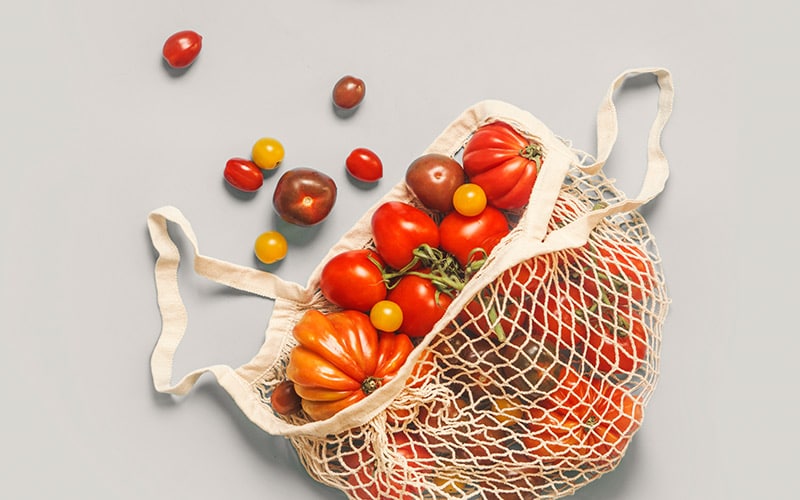
KEY THEMES
1. Artificial intelligence and machine learning
Research indicates that companies leveraging consumer behavioral insights can achieve 85% higher sales growth compared to their peers, along with a gross margin increase of over 25%. Carrefour has integrated OpenAI technologies to launch a generative AI-powered shopping experience. Consumers can use natural language AI to help with their daily shopping, including product selection based on budget, dietary constraints, and menu ideas. Estée Lauder Companies (ELC) UK & Ireland has introduced an AI-powered mobile app to assist visually impaired users with applying makeup.
However Infosys research shows that only 4% of CPG firms that were surveyed have generated business value with generative AI and 14% were pessimistic about the type of impact generative AI would have on business areas like revenue, business model, talent, reputation, profit, and cost efficiency.
Companies also perceive greater competition as one of the risks of this technology, and worry about not being able to catch up with their competitors owing to the edge the use of AI can provide. This means, companies need to strategize their usage of the technology better in a way that it benefits them. Companies must invest in AI capabilities and data infrastructure to remain competitive, which includes building internal expertise, partnering with tech firms, and reimagining business processes to leverage AI's potential.
2. Internet of Things (IoT) and Smart products
The proliferation of connected devices is creating new opportunities for product innovation and consumer engagement. Smart home appliances, wearable tech, and IoT- enabled packaging are just the beginning. NFC tags, QR codes, and RFID tags are being used for smart packaging to streamline simplify inventory management, track products, ensure product safety, and add an element of interaction for the consumer.
Consumer goods companies will need to consider how to embed connectivity and intelligence into their products. In the rush to get ahead in technology, the key is to also ensure that there are strong business cases, and have the ethical considerations in place, to be successful.
3. Augmented reality (AR) and virtual reality (VR)
The AR and VR market is expected to double between 2024 and 2028, and 40% of shoppers are likely to spend more on a product if they are allowed to test it through AR. AR and VR technologies are revolutionizing digital catalog, augmented packaging, product visualization, virtual try-ons, and immersive brand experiences. Consumers can view products in fine detail from various angles, enjoying a more enriched experience than traditional images or videos provide. L'Oréal's Modiface AR technology allows consumers to virtually try on makeup products before purchasing.
Brands should explore AR/VR applications to enhance the shopping experience, reduce returns, and create memorable brand interactions. Shopify has seen a 40% decrease in returns from 3D visualization. As even minor decrease in returns rates and related costs can have a positive impact on a company’s profitability, these technologies are worth considering.
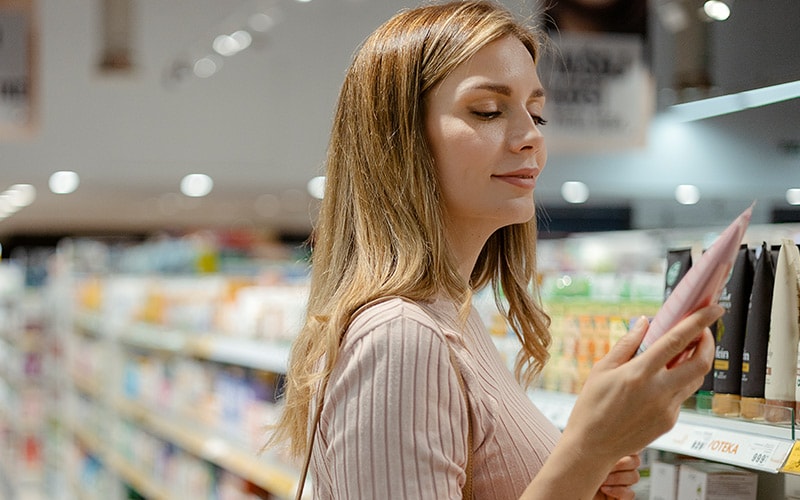
4. Cloud and supply chain transparency
As cloud technology allows storage of vast volumes of data which can be accessed easily by relevant stakeholders in real-time and as a single source of truth, it enables unprecedented levels of supply chain transparency and traceability. “CPG and retail businesses are implementing loyalty programs that are applicable across their brands, on the lines of a single pass that can be used to shop across,” says Shreshta Shyamsundar, distinguished technologist, Infosys, in Infosys’ Cloud Radar CPG and Retail Report. “This requires an optimal fulfillment and inventory management system throughout, so companies can make data-driven decisions and offer a great consumer experience. These are some of the top business capabilities that companies rely on cloud for.”
For example, Infosys implemented a data and cloud-based solution for large confectionary manufacturer to ensure the right level of inventory in stores and shelves in their large retail partner, helping the client achieve business growth.
Companies will need to evaluate cloud solutions to improve supply chain efficiency, and meet growing consumer demand swiftly.
5. Direct-to-Consumer (DTC) and subscription models
The rise of DTC brands and subscription- based offerings is challenging traditional retail models and enabling deeper consumer relationships. Being able to sell to the consumer directly without the involvement of middlemen retailers has benefited many brands such as Warby Parker, and Allbirds.
Though this trend was spurred by the rise of digital commerce, it will require brands to explore offering an omnichannel experience to consumers and enter the phygital or in-store space as well to increase flexibility for consumers. After its all-in-one meal drinks became popular, Huel came up with a flexible subscription model where customers can pick their flavors, frequency of delivery, and also get discounts. This model ensures that consumers have a regular stock of products without having to worry about running out of them or constantly having to replenish them.
Established brands will need to consider DTC strategies and subscription offerings to compete with digital-native startups and build lasting consumer relationships.
6. Personalization at scale
Advances in data analytics and manufacturing technologies are enabling mass customization and hyper-personalized products. They provide brands with detailed insights into consumer preferences, behaviors, and purchase histories, enabling them to tailor their offerings with greater precision. Function of Beauty creates custom hair care products based on individual consumer profiles – hair type and hair goals – and preferences based on a hair quiz.
Real-time personalization through location- based services is becoming popular, with businesses utilizing geolocation data to deliver personalized promotions and product suggestions based on consumers' locations.
Companies will need to invest in data capabilities and flexible manufacturing processes to deliver personalized products and experiences cost-effectively. It is also important for them to vary the intensity of personalization based on stages in the consumer journey, as research has shown that while companies tend to offer personalization the most at the pre-purchase or at-purchase stage, consumers prefer it most post purchase.
7. Circular economy and sustainable packaging
Research indicates that CPG companies worldwide are looking to boost eco-friendly practices. Growing environmental concerns are driving a shift towards circular business models and eco-friendly packaging solutions. Regulations are a major reason for it, but making this move can also be lucrative for companies as consumers increasingly look to make more sustainable choices and have become mindful of making sustainable choices and veering towards brands that reflect their sustainability philosophy. Unilever has been amping up its sustainability efforts by reducing their virgin plastic use by 18% against a 2019 baseline and increased its recycled plastic use to 22% of its global plastic packaging portfolio, expected to help the organization achieve its 25% goal by 2025.
Companies will need to prioritize sustainability in product design and packaging to meet regulatory requirements and consumer expectations.
Nestlé Mexico’s conversational commerce strategy helped it boost its revenues.
8. Conversational commerce
Chatbots, virtual assistants, and AI-driven messaging platforms are being used to deliver personalized and seamless shopping experiences. Through real-time conversations, customers receive instant product recommendations, get their questions answered, and receive assistance with their purchases, ultimately boosting customer satisfaction and sales.
CPG companies should consider exploring conversational commerce to meet evolving consumer expectations, enhance customer interactions and drive business growth.

INDUSTRY GROWTH AREAS
The consumer goods industry is witnessing growth in several key areas, driven by evolving consumer preferences and technological advancements. Companies that can capitalize on these trends will be well-positioned for success.
1. Health and wellness
The global health and wellness market value is projected to reach $5.45 trillion by 2032. The industry has seen phenomenal growth post pandemic, especially as the COVID years emphasized the importance of health in the minds of consumers.
Data shows big growth in the major wellness markets since the pandemic, with some exceeding their pre-pandemic market sizes by 120% or more. Consumers view wellness as touching upon areas such as better health, fitness, nutrition, appearance, sleep, and mindfulness. Wellness real estate, traditional and complementary medicine, and public health, prevention, and personalized medicine are the fastest-growing areas this year. Meanwhile, healthy eating, nutrition, and weight loss are anticipated to become the largest wellness market by 2025. There is a preference for foods and drinks that are organic, gluten-free, non-GMO, and low sugar options, and ones that contain added probiotics, antioxidants, superfoods, vitamins, and adaptogens.
2. Sustainable and eco-friendly products
A study conducted by the NYU Stern School of Business Center for Sustainable Business shows that sustainability-marketed products delivered 50% of market growth from 2013- 2018. Between 2023 and 2028, the vegan cosmetics industry is expected to expand at a CAGR of 6.31%, crossing a $24 billion market size indicating a growing awareness of eco- friendly products. Demand for products with natural and organic ingredients that are free from parabens and sulfates is growing.
Consumers are increasingly prioritizing sustainability in their purchasing decisions, and products with eco-friendly packaging, ethical sourcing, and low environmental impact are gaining traction. Though they are looking for cheaper everyday products, they are willing to spend 9.7% more if the products are sustainably sourced and packaged. The vegan beauty marketing is expanding with products from brands like Milk Makeup, Charlotte Tilbury, and Rare Beauty going viral on TikTok.
3. Premium and luxury goods
Despite economic uncertainty, the premium and luxury segments continue to perform well as consumers seek high-quality, experiential products. In 2023, the worldwide market for luxury items was valued at approximately $366.2 billion. It is projected to expand at a CAGR of 6.8% over the period from 2024 to 2030. It could be attributed to more millennial consumers buying luxury goods. This shows the demand for luxury fashion and accessories and underscores the resilience of the premium segment.
4. Plant-based and alternative proteins
Between 2023 and 2028, the global plant- based food market is anticipated to expand significantly, reaching a market size exceeding $75 billion, up from $41.06 billion in 2022. This growth trajectory is fueled by factors such as increased consumer demand and sustainability trends, along with health, environmental, and ethical considerations.
5. Personalized nutrition and beauty
Consumers are seeking products tailored to their needs and preferences. Personalized nutrition and beauty products are gaining popularity. For example, GUTXY specializes in personalized nutrition by conducting microbiome analysis. This reflects the growing demand for customized health solutions.
6. Digital commerce and omnichannel retail
Projections show that global e-commerce sales will grow over the next couple of years. The social commerce market in United States is expected to grow to $144.6 billion in 2029. Consumers are increasingly using Instagram and TikTok to purchase items, with some products flying off the shelves due to viral videos by influencers. Mobile commerce is also gaining popularity with shoppers increasingly using their phones to make purchases.
In the US, approximately 86% of CPG sales come from omnichannel shoppers, who buy CPG products through various channels simultaneously, and one out of five shoppers combine in-store shopping with prior online orders. This means brands need to get their assortments right based on which products are popular on which channel. Walmart's investment in its e-commerce platform and omnichannel capabilities has positioned it as a leader in the digital retail space.
The advent of digital shelf has increased competition among brands to optimize their products with the optimum keywords to make it to the search engine results pages (SERPs), be visible to the consumer, and accelerate omnichannel growth. This involves ensuring that CPG products are readily available in the supply chain to meet consumer demand.
Brands also need to boost traffic through AI-enhanced search and improve conversion rates with AI-powered content that drives effective customer engagement. Retail media is projected to have the quickest growth in ad spending this year, with CAGR of 17.7% over the next couple of years, attributed to reasons such as ease of measurement of brand performance and quality of customer insights. Optimizing media spend across channels can yield huge ROI for brands.
A HOPEFUL FUTURE
The consumer goods industry is navigating a period of transformation, driven by technological advancements, evolving consumer preferences, and economic uncertainty. Companies that can effectively leverage data and AI, embrace sustainability, and innovate to meet changing consumer demands will be best positioned for success.
In 2024 and beyond, the industry will see continued growth in health and wellness, beauty and cosmetics, sustainable products, premium goods, plant-based foods, and personalized nutrition and beauty categories, and the e-commerce channel.
Advances in AI, IoT and digital technology are helping achieve hyper productivity, improve supply chain efficiencies, and drive new growth opportunities. By focusing on these growth areas, embracing digital and AI, and adapting to emerging trends, CPG companies can drive profitable growth and create long-term value.


